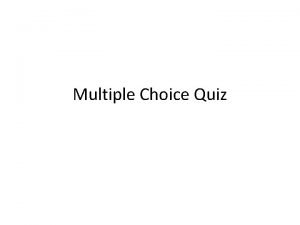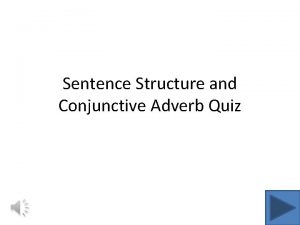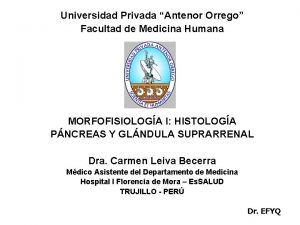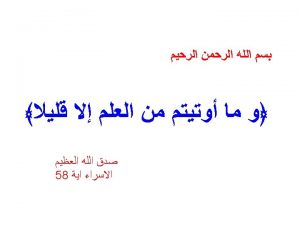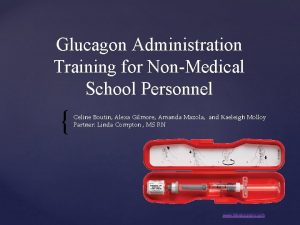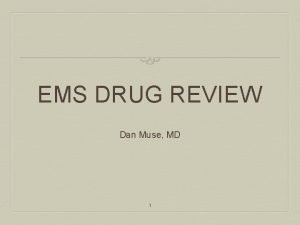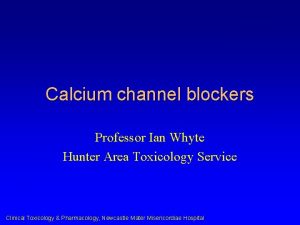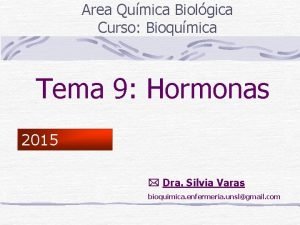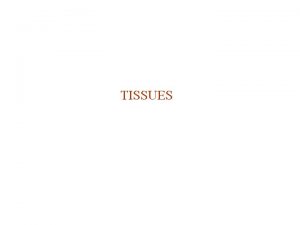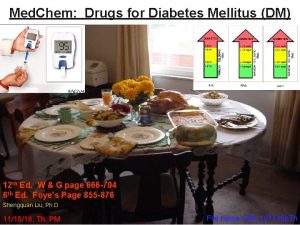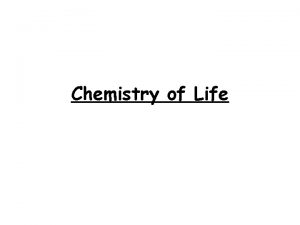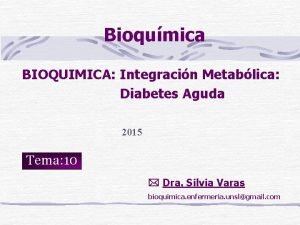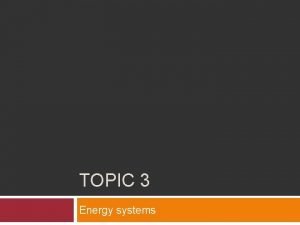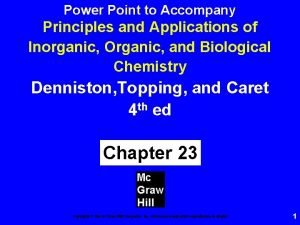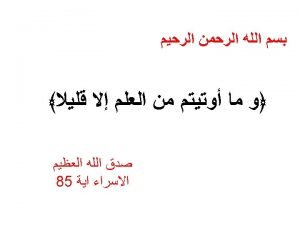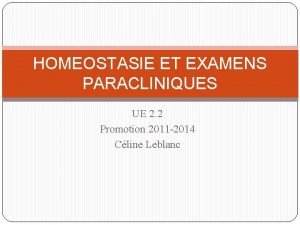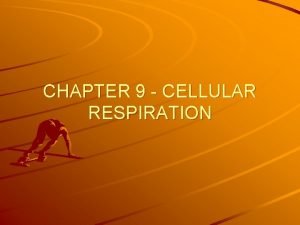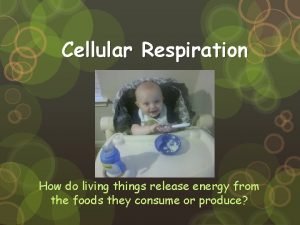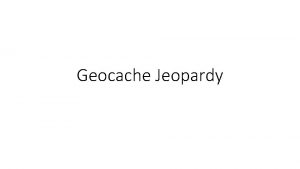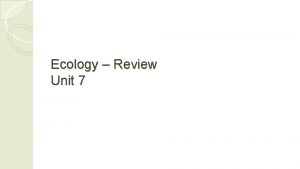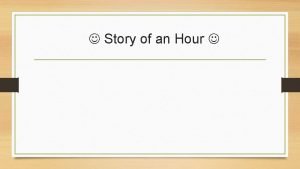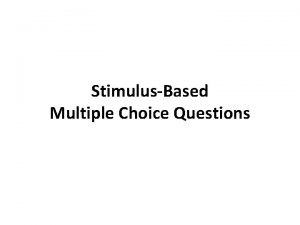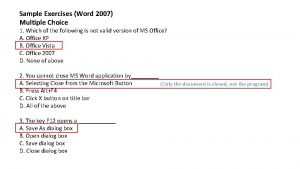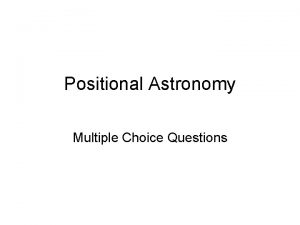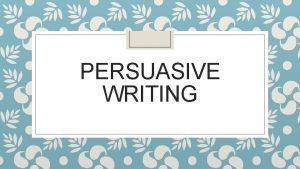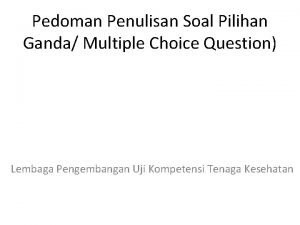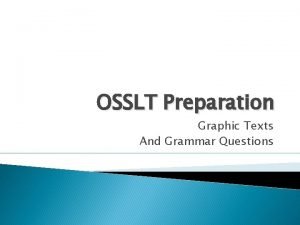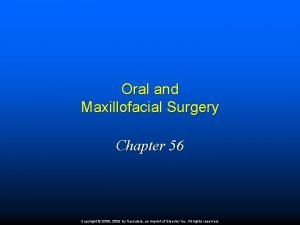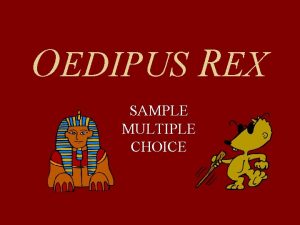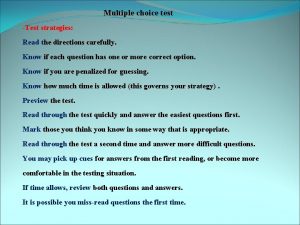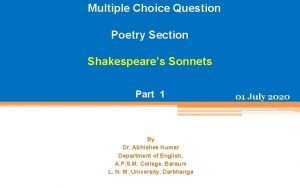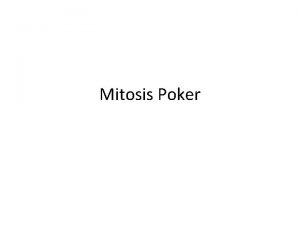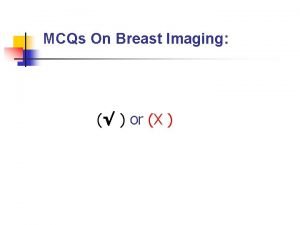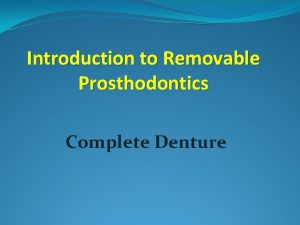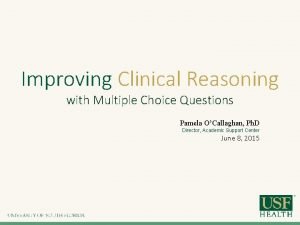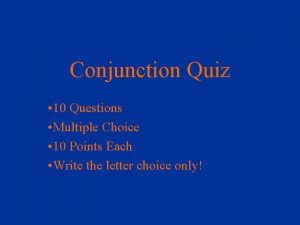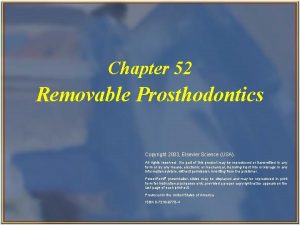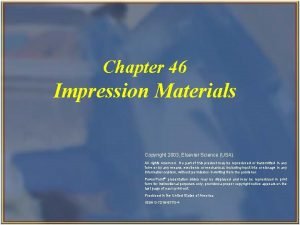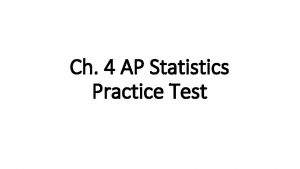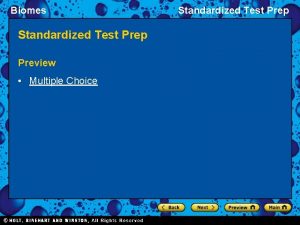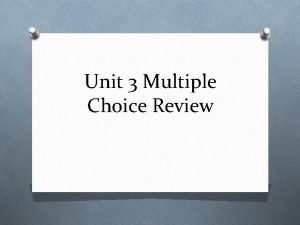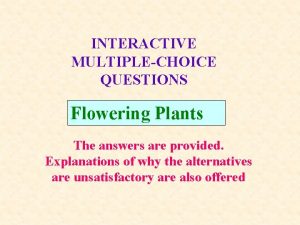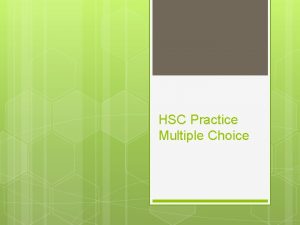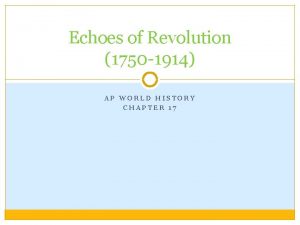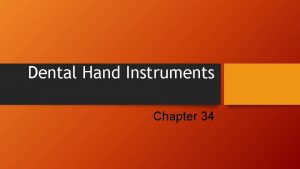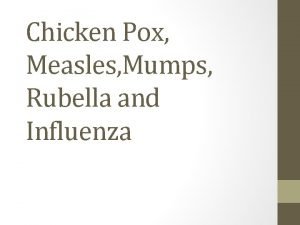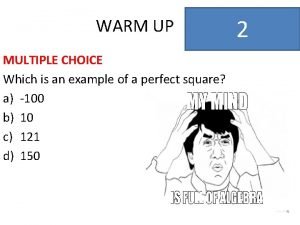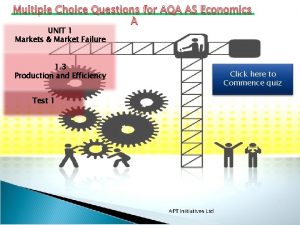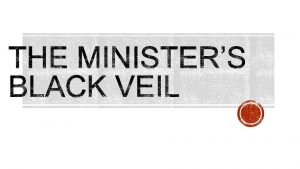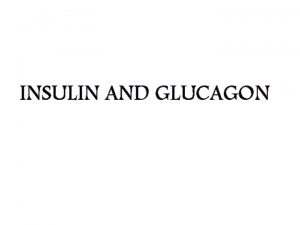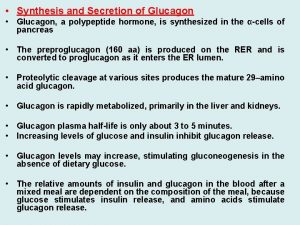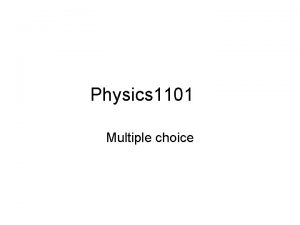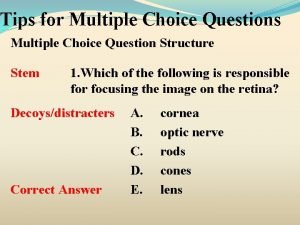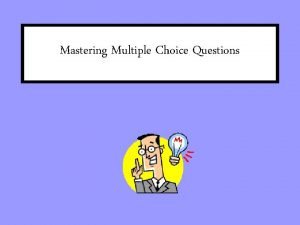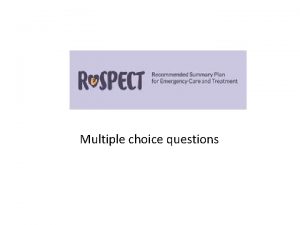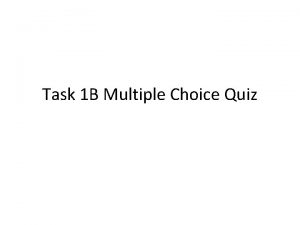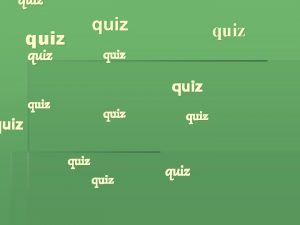Multiple Choice Quiz Which structure releases glucagon A













































![Explain how nerve impulses are transmitted along and between neurons. [9] Explain how nerve impulses are transmitted along and between neurons. [9]](https://slidetodoc.com/presentation_image_h/21cb84192683e5d9c896d44a15a8ac35/image-46.jpg)


![Explain how nerve impulses are transmitted along and between neurons. [9] • the resting Explain how nerve impulses are transmitted along and between neurons. [9] • the resting](https://slidetodoc.com/presentation_image_h/21cb84192683e5d9c896d44a15a8ac35/image-49.jpg)
![Explain the principle of homeostasis with reference to the control of body temperature. [9] Explain the principle of homeostasis with reference to the control of body temperature. [9]](https://slidetodoc.com/presentation_image_h/21cb84192683e5d9c896d44a15a8ac35/image-50.jpg)



![Explain the principle of homeostasis with reference to the control of body temperature. [9] Explain the principle of homeostasis with reference to the control of body temperature. [9]](https://slidetodoc.com/presentation_image_h/21cb84192683e5d9c896d44a15a8ac35/image-54.jpg)
![Discuss the cause, transmission and social implications of AIDS. [8] • • • cause: Discuss the cause, transmission and social implications of AIDS. [8] • • • cause:](https://slidetodoc.com/presentation_image_h/21cb84192683e5d9c896d44a15a8ac35/image-55.jpg)

![Explain the mechanisms involved in the ventilation of the lungs. [8] Explain the mechanisms involved in the ventilation of the lungs. [8]](https://slidetodoc.com/presentation_image_h/21cb84192683e5d9c896d44a15a8ac35/image-57.jpg)


![Explain the mechanisms involved in the ventilation of the lungs. [8] • • • Explain the mechanisms involved in the ventilation of the lungs. [8] • • •](https://slidetodoc.com/presentation_image_h/21cb84192683e5d9c896d44a15a8ac35/image-60.jpg)
![Describe the relationship between the structure and function of blood vessels. [6] • • Describe the relationship between the structure and function of blood vessels. [6] • •](https://slidetodoc.com/presentation_image_h/21cb84192683e5d9c896d44a15a8ac35/image-61.jpg)
![Outline the role of hormones in the menstrual cycle. [6] Outline the role of hormones in the menstrual cycle. [6]](https://slidetodoc.com/presentation_image_h/21cb84192683e5d9c896d44a15a8ac35/image-62.jpg)




![Outline the role of hormones in the menstrual cycle. [6] FSH promotes development of Outline the role of hormones in the menstrual cycle. [6] FSH promotes development of](https://slidetodoc.com/presentation_image_h/21cb84192683e5d9c896d44a15a8ac35/image-67.jpg)
![Draw a labelled diagram of the adult female reproductive system. [4] • Award [1] Draw a labelled diagram of the adult female reproductive system. [4] • Award [1]](https://slidetodoc.com/presentation_image_h/21cb84192683e5d9c896d44a15a8ac35/image-68.jpg)
![Draw and label a diagram of the digestive system. [4] • esophagus — attached Draw and label a diagram of the digestive system. [4] • esophagus — attached](https://slidetodoc.com/presentation_image_h/21cb84192683e5d9c896d44a15a8ac35/image-69.jpg)

- Slides: 70

Multiple Choice Quiz

Which structure releases glucagon? • A. α cells of the pancreas • B. β cells of the pancreas • C. Liver cells • D. Hypothalamus

What is the main function of the large intestine? • A. Absorption of water • B. Digestion of fats and proteins • C. Absorption of nutrients • D. Recycling of digestive enzymes

What does the digestion of starch by amylase produce? • A. Lactose • B. Sucrose • C. Galactose • D. Maltose

Which chamber of the heart has the thickest walls? • A. Left atrium • B. Right atrium • C. Left ventricle • D. Right ventricle

Which of the following statements about antibodies is correct? • A. Antibodies are polypeptides. • B. Antibodies are produced by the bone marrow. • C. Antibodies are pathogenic foreign substances. • D. Antibodies kill bacteria but not viruses.

• What are two effects of HIV on the immune system? • A. Reduction in antibody production and increase in active lymphocytes • B. Increase in antibody production and decrease in red blood cells • C. Reduction in antibody production and decrease in active lymphocytes • D. Increase in antibody production and increase in red blood cells

• Which factors related to mucous membranes protect the body against microbes? • I. Production of lysozyme • II. Secretion of alkaline solutions • III. Trapping of microbes • A. I and II only • B. II and III only • C. I and III only • D. I, II and III

• Which of the following is part of the process of cellular respiration? • A. Changes in the volume of the thoracic cavity • B. Exchange of gases across the surface of the alveoli • C. Exchange of gases across the surface of capillaries • D. Glycolysis

• Which muscles contract to cause air to pass into the lungs through the trachea? • A. Internal intercostal muscles and diaphragm • B. Internal intercostal muscles and abdomen wall muscles • C. External intercostal muscles and diaphragm • D. External intercostal muscles and abdomen wall muscles

What change occurs to the pressure and volume of the lungs when the external intercostal muscles contract? • A. Both pressure and volume increase. • B. Pressure increases and volume decreases. • C. Pressure decreases and volume increases. • D. Both pressure and volume decrease.

Between which structures do sensory neurons carry nerve impulses? • A. From receptors to muscles • B. From effectors to the central nervous system (CNS) • C. From the central nervous system (CNS) to receptors • D. From receptors to the central nervous system (CNS)

A process occurs in which the inside of a neuron develops a net positive charge compared with the outside. What is the name of this process? • A. Resting potential • B. Repolarization • C. Depolarization • D. Hyperpolarization

What causes the formation of a nerve impulse on the post-synaptic membrane? • A. Ca 2+ binding with a receptor site • B. K+ leaking into the post-synaptic membrane • C. Neurotransmitter binding with receptor sites • D. Neurotransmitter being removed from the synapse

What is a role of the hypothalamus in homeostasis? • A. Monitoring body temperature • B. Monitoring blood glucose concentration • C. Secretion of glucagon • D. Secretion of sweat

Answers

Which structure releases glucagon? • A. α cells of the pancreas • B. β cells of the pancreas • C. Liver cells • D. Hypothalamus

Which structure releases glucagon? • A. α cells of the pancreas • B. β cells of the pancreas • C. Liver cells • D. Hypothalamus

What is the main function of the large intestine? • A. Absorption of water • B. Digestion of fats and proteins • C. Absorption of nutrients • D. Recycling of digestive enzymes

What is the main function of the large intestine? • A. Absorption of water • B. Digestion of fats and proteins • C. Absorption of nutrients • D. Recycling of digestive enzymes

• What does the digestion of starch by amylase produce? • A. Lactose • B. Sucrose • C. Galactose • D. Maltose

What does the digestion of starch by amylase produce? • A. Lactose • B. Sucrose • C. Galactose • D. Maltose

Which chamber of the heart has the thickest walls? • A. Left atrium • B. Right atrium • C. Left ventricle • D. Right ventricle

Which chamber of the heart has the thickest walls? • A. Left atrium • B. Right atrium • C. Left ventricle • D. Right ventricle

Which of the following statements about antibodies is correct? • A. Antibodies are polypeptides. • B. Antibodies are produced by the bone marrow. • C. Antibodies are pathogenic foreign substances. • D. Antibodies kill bacteria but not viruses.

Which of the following statements about antibodies is correct? • A. Antibodies are polypeptides. • B. Antibodies are produced by the bone marrow. • C. Antibodies are pathogenic foreign substances. • D. Antibodies kill bacteria but not viruses.

• What are two effects of HIV on the immune system? • A. Reduction in antibody production and increase in active lymphocytes • B. Increase in antibody production and decrease in red blood cells • C. Reduction in antibody production and decrease in active lymphocytes • D. Increase in antibody production and increase in red blood cells

• What are two effects of HIV on the immune system? • A. Reduction in antibody production and increase in active lymphocytes • B. Increase in antibody production and decrease in red blood cells • C. Reduction in antibody production and decrease in active lymphocytes • D. Increase in antibody production and increase in red blood cells

• Which factors related to mucous membranes protect the body against microbes? • I. Production of lysozyme • II. Secretion of alkaline solutions • III. Trapping of microbes • A. I and II only • B. II and III only • C. I and III only • D. I, II and III

Which factors related to mucous membranes protect the body against microbes? • I. Production of lysozyme • II. Secretion of alkaline solutions • III. Trapping of microbes • A. I and II only • B. II and III only • C. I and III only • D. I, II and III

• Which of the following is part of the process of cellular respiration? • A. Changes in the volume of the thoracic cavity • B. Exchange of gases across the surface of the alveoli • C. Exchange of gases across the surface of capillaries • D. Glycolysis

• Which of the following is part of the process of cellular respiration? • A. Changes in the volume of the thoracic cavity • B. Exchange of gases across the surface of the alveoli • C. Exchange of gases across the surface of capillaries • D. Glycolysis

• Which muscles contract to cause air to pass into the lungs through the trachea? • A. Internal intercostal muscles and diaphragm • B. Internal intercostal muscles and abdomen wall muscles • C. External intercostal muscles and diaphragm • D. External intercostal muscles and abdomen wall muscles

• Which muscles contract to cause air to pass into the lungs through the trachea? • A. Internal intercostal muscles and diaphragm • B. Internal intercostal muscles and abdomen wall muscles • C. External intercostal muscles and diaphragm • D. External intercostal muscles and abdomen wall muscles

What change occurs to the pressure and volume of the lungs when the external intercostal muscles contract? • A. Both pressure and volume increase. • B. Pressure increases and volume decreases. • C. Pressure decreases and volume increases. • D. Both pressure and volume decrease.

What change occurs to the pressure and volume of the lungs when the external intercostal muscles contract? • A. Both pressure and volume increase. • B. Pressure increases and volume decreases. • C. Pressure decreases and volume increases. • D. Both pressure and volume decrease.

Between which structures do sensory neurons carry nerve impulses? • A. From receptors to muscles • B. From effectors to the central nervous system (CNS) • C. From the central nervous system (CNS) to receptors • D. From receptors to the central nervous system (CNS)

Between which structures do sensory neurons carry nerve impulses? • A. From receptors to muscles • B. From effectors to the central nervous system (CNS) • C. From the central nervous system (CNS) to receptors • D. From receptors to the central nervous system (CNS)

A process occurs in which the inside of a neuron develops a net positive charge compared with the outside. What is the name of this process? • A. Resting potential • B. Repolarization • C. Depolarization • D. Hyperpolarization

A process occurs in which the inside of a neuron develops a net positive charge compared with the outside. What is the name of this process? • A. Resting potential • B. Repolarization • C. Depolarization • D. Hyperpolarization

What causes the formation of a nerve impulse on the post-synaptic membrane? • A. Ca 2+ binding with a receptor site • B. K+ leaking into the post-synaptic membrane • C. Neurotransmitter binding with receptor sites • D. Neurotransmitter being removed from the synapse

What causes the formation of a nerve impulse on the post-synaptic membrane? • A. Ca 2+ binding with a receptor site • B. K+ leaking into the post-synaptic membrane • C. Neurotransmitter binding with receptor sites • D. Neurotransmitter being removed from the synapse

What is a role of the hypothalamus in homeostasis? • A. Monitoring body temperature • B. Monitoring blood glucose concentration • C. Secretion of glucagon • D. Secretion of sweat

What is a role of the hypothalamus in homeostasis? • A. Monitoring body temperature • B. Monitoring blood glucose concentration • C. Secretion of glucagon • D. Secretion of sweat

Essay questions
![Explain how nerve impulses are transmitted along and between neurons 9 Explain how nerve impulses are transmitted along and between neurons. [9]](https://slidetodoc.com/presentation_image_h/21cb84192683e5d9c896d44a15a8ac35/image-46.jpg)
Explain how nerve impulses are transmitted along and between neurons. [9]

1. Arrival of Action Potential causes Na+ channels to open and Na+ to rush in => internal potential reversed (more positive inside than outside) DEPOLARIZATION 2. K+ channels open and K+ flows in => internal charge is negative again REPOLARIZATION

![Explain how nerve impulses are transmitted along and between neurons 9 the resting Explain how nerve impulses are transmitted along and between neurons. [9] • the resting](https://slidetodoc.com/presentation_image_h/21cb84192683e5d9c896d44a15a8ac35/image-49.jpg)
Explain how nerve impulses are transmitted along and between neurons. [9] • the resting potential of cell is negative inside compared with outside; • stimulation causes depolarization/reversal of charge on each side; • due to Na+ channels opening / Na+ flowing into the cell; • which causes an action potential; • K+ channels open / K+ flows out of the cell; • sodium potassium pump restores resting potential; • transmitted between neurons across a synapse; • neurotransmitter released into synaptic cleft; • diffuse across cleft to postsynaptic membrane; • where they bind to receptors; • influx of Na+ into cell; • which may initiate action potential;
![Explain the principle of homeostasis with reference to the control of body temperature 9 Explain the principle of homeostasis with reference to the control of body temperature. [9]](https://slidetodoc.com/presentation_image_h/21cb84192683e5d9c896d44a15a8ac35/image-50.jpg)
Explain the principle of homeostasis with reference to the control of body temperature. [9]

8. Negative Feedback Mechanism • set-point: a constant value to which a variable is constrained • receptors: sensors respond to stimuli • control center: receives information from sensors, compares the value to a set-point and direct actions to return the variable to its set-point • effectors: a mechanism for taking action to return a variable to its setpoint • responses: the resulting action produced by an effector

10. Thermoregulation • Set point: core body temperature: 37 C • Sensors: blood and body temperatures above and below 38 C • Control center: Hypothalamus thermostat sensitivity to blood temperature + connection to pituitary gland

10. Thermoregulation: Effectors Response to overheating Response to chilling Vasodilation (skin arterioles become wider) Increase heat loss Vasoconstriction (skin arterioles become narrower) decreases heat loss Skeletal muscles remain relaxed decrease heat generation Skeletal muscles cause rapid contractions (shivering) increase heat generation Sweating Increase heat loss No sweating decrease heat loss
![Explain the principle of homeostasis with reference to the control of body temperature 9 Explain the principle of homeostasis with reference to the control of body temperature. [9]](https://slidetodoc.com/presentation_image_h/21cb84192683e5d9c896d44a15a8ac35/image-54.jpg)
Explain the principle of homeostasis with reference to the control of body temperature. [9] • • • homeostasis involves maintaining a constant internal environment; involves the concept of negative feedback; a deviation from the norm is the stimulus to trigger the mechanisms to restore the norm / OWTTE; body temperature in mammals must be maintained at a constant level for enzymes; controlled by the hypothalamus / hypothalamus as a thermostat; too hot causes vasodilation so more heat is lost from skin; too hot causes sweating as evaporation of sweat leads to cooling; too cold causes shivering/muscle contraction as (increased metabolic rate) generates heat; too cold causes vasoconstriction so less heat lost from skin; liver/muscles can generate heat which is distributed around the body by blood; hair can trap air which insulates against heat loss (goose bumps); behavioural example of heat retention; (e. g. adding layers of clothes, jumping up and down, huddling in groups)
![Discuss the cause transmission and social implications of AIDS 8 cause Discuss the cause, transmission and social implications of AIDS. [8] • • • cause:](https://slidetodoc.com/presentation_image_h/21cb84192683e5d9c896d44a15a8ac35/image-55.jpg)
Discuss the cause, transmission and social implications of AIDS. [8] • • • cause: [4 max] AIDS caused by HIV; penetrates (T) lymphocytes; (envelope) (glyco)protein and cell receptors involved; number of lymphocytes reduced over years; results in lower immunity; other illnesses develop (as result of lower immunity); AIDS is the observed syndrome when final stages of infection develop / OWTTE; transmission: [3 max] HIV transmitted through blood/sexual contact/body fluids/placenta/ childbirth/breastfeeding; distribution/transmission uneven around the world; transmission risk increased depending on society’s traditions/beliefs/ behaviour; (rare minority of) individuals do not have cell receptors and do not develop AIDS; condoms/latex barriers only protection against transmission through sexual contact; social implications: [3 max] treatment expensive; discrimination against victims; moral obligation of wealthy countries to help poorer countries; economic consequences / loss of wage earners etc. ; increase in the number of orphans; comment on traditions/beliefs/behaviour; (if not already awarded in transmission) 8 max

HIV/AIDS • HIV recognizes certain proteins in cell membrane of helper T cells • Helper T cells: cells that communicate which cells need to undergo cloning process and begin antibody production weakened immune system
![Explain the mechanisms involved in the ventilation of the lungs 8 Explain the mechanisms involved in the ventilation of the lungs. [8]](https://slidetodoc.com/presentation_image_h/21cb84192683e5d9c896d44a15a8ac35/image-57.jpg)
Explain the mechanisms involved in the ventilation of the lungs. [8]

6. 4. 5 How does ventilation occur? • Controlled by inverse relationship between pressure and volume (i. e. increase in volume decrease in pressure) • ‘Partial vacuum’

6. 4. 5 How does ventilation occur?
![Explain the mechanisms involved in the ventilation of the lungs 8 Explain the mechanisms involved in the ventilation of the lungs. [8] • • •](https://slidetodoc.com/presentation_image_h/21cb84192683e5d9c896d44a15a8ac35/image-60.jpg)
Explain the mechanisms involved in the ventilation of the lungs. [8] • • • • external intercostal muscles contract; internal intercostal muscles relax; pulling the rib cage upwards; diaphragm contracts and flattens; increase in volume of thoracic cavity; this reduces pressure; so air enters the lungs; internal intercostal muscles contract / external intercostal muscles relax; diaphragm relaxes; abdominal muscles/organs/liver push diaphragm upwards; decrease in volume of thoracic cavity; increases the pressure; so air leaves the lungs; Award any of the above points if clearly drawn in a diagram. 8 max
![Describe the relationship between the structure and function of blood vessels 6 Describe the relationship between the structure and function of blood vessels. [6] • •](https://slidetodoc.com/presentation_image_h/21cb84192683e5d9c896d44a15a8ac35/image-61.jpg)
Describe the relationship between the structure and function of blood vessels. [6] • • • arteries carry blood under high pressure; they have a thicker elastic wall/narrower lumen; they have muscles that control pressure / help move the blood; veins carry blood under lower pressure; they have thin walls with less elastic tissue/muscle/wider lumen; have valves to prevent back flow; capillaries have walls which are one cell thick; to allow easy diffusion across their wall / ultrafiltration; (some) capillaries have pores/clefts; Award [5 max] if capillaries are not referred to. 6 max
![Outline the role of hormones in the menstrual cycle 6 Outline the role of hormones in the menstrual cycle. [6]](https://slidetodoc.com/presentation_image_h/21cb84192683e5d9c896d44a15a8ac35/image-62.jpg)
Outline the role of hormones in the menstrual cycle. [6]

2. Menstrual cycle • Purpose: release egg for possible fertilization and implantation in the uterus • Each cycle lasts 28 days • All egg cells created before birth and matures at the onset of puberty • Premature egg cells (oocytes) develop in follicles • Follicle deteriorates into a corpus luteum


Hormones released from anterior pituitary • FSH (Follicle Stimulating Hormone) – Stimulates growth of follicle – Stimulate secretion of estrogen • LH (Luteinizing hormone) – Stimulates ovluation – Stimulates conversion of empty follicle to corpus luteum – Stimulates secretion of estrogen and progesterone by corpus luteum

Hormones released from ovaries • Estrogen (released from ovaries) – Stimulates repair and growth of endometrium (uterus lining) – Negative feedback on pituitary to block FSH – Positive feedback on pituitary to release LH • Progesterone (released from corpus luteum) – Stimulates final growth of uterine lining – Negative feedback on pituitary to block FSH and LH
![Outline the role of hormones in the menstrual cycle 6 FSH promotes development of Outline the role of hormones in the menstrual cycle. [6] FSH promotes development of](https://slidetodoc.com/presentation_image_h/21cb84192683e5d9c896d44a15a8ac35/image-67.jpg)
Outline the role of hormones in the menstrual cycle. [6] FSH promotes development of a new follicle; also leads to the production of estrogen; estrogen brings about repair and growth of uterine lining; estrogen causes negative feedback of FSH; estrogen brings about LH production; LH stimulates follicle growth; LH triggers ovulation; estrogen contributes to the proliferative phase of the uterine cycle / triggers LH surge; • progesterone contributes to the secretory phase of the uterine cycle/ maintains uterus lining; • lowered level of progesterone (due to degeneration of corpus luteum) • •
![Draw a labelled diagram of the adult female reproductive system 4 Award 1 Draw a labelled diagram of the adult female reproductive system. [4] • Award [1]](https://slidetodoc.com/presentation_image_h/21cb84192683e5d9c896d44a15a8ac35/image-68.jpg)
Draw a labelled diagram of the adult female reproductive system. [4] • Award [1] for each structure clearly drawn and correctly labelled. ovary—shown adjacent to but not joined to oviduct/fallopian tube; • oviduct/fallopian tube — shown as a tube leading into a uterus; • uterus—shown with a thicker wall than oviduct/fallopian tube; • vagina—shown leading from the uterus, connected to the cervix; • cervix — shown as a constriction between the vagina and uterus; • endometrium—shown as inner lining of uterus; 4 max
![Draw and label a diagram of the digestive system 4 esophagus attached Draw and label a diagram of the digestive system. [4] • esophagus — attached](https://slidetodoc.com/presentation_image_h/21cb84192683e5d9c896d44a15a8ac35/image-69.jpg)
Draw and label a diagram of the digestive system. [4] • esophagus — attached to both mouth and stomach; • stomach — j-shaped sac attached to esophagus and u-shaped portion of • small intestine; • large intestine — wider diameter than small intestine, attached to small intestine; • pancreas — leaf-shaped, in u-shaped region of small intestine with small duct • connected to small intestine; • liver — large, triangular, to left of stomach; • gall bladder — small sac drawn on top of liver with tube connected to small • intestine at same region as duct from pancreas; • anus —at end of large intestine but narrower in diameter; 4 max

Digestive system
 Which structure releases glucagon
Which structure releases glucagon Multiple choice questions on sentence structure
Multiple choice questions on sentence structure Multiple choice comma quiz
Multiple choice comma quiz Dna structure and replication packet answer key
Dna structure and replication packet answer key Glandula suprarrenal
Glandula suprarrenal Pancreatic hormones
Pancreatic hormones Glucagon training video
Glucagon training video Beta-blocker overdose treatment glucagon
Beta-blocker overdose treatment glucagon Glucagon for beta blocker overdose
Glucagon for beta blocker overdose Que celulas secretan glucagon
Que celulas secretan glucagon Glucagon training video
Glucagon training video Glucose insulin
Glucose insulin Fpg dm
Fpg dm Glucagon
Glucagon Glucosa despues de comer
Glucosa despues de comer Functions of glucagon
Functions of glucagon Glucagon is secreted by:
Glucagon is secreted by: Glomerular mesangial cells
Glomerular mesangial cells Insuline et glucagon
Insuline et glucagon Glucagon
Glucagon Cellular respiration releases
Cellular respiration releases Cellular respiration releases
Cellular respiration releases Cisco aci nir
Cisco aci nir The yucca plant releases a strong scent at night
The yucca plant releases a strong scent at night The yucca plant releases a strong scent at night
The yucca plant releases a strong scent at night Good choice or bad choice
Good choice or bad choice How to write multiple choice questions
How to write multiple choice questions Multiple binary choice items
Multiple binary choice items Of a strange nature is the suit you follow
Of a strange nature is the suit you follow She carried herself unwittingly like a goddess of victory
She carried herself unwittingly like a goddess of victory What is stimulus in mcq
What is stimulus in mcq Exercises for microsoft word
Exercises for microsoft word Apcsa recursion
Apcsa recursion Multiple choice questions for primary students
Multiple choice questions for primary students Ap lit multiple choice tips
Ap lit multiple choice tips Astronomy questions and answers multiple choice
Astronomy questions and answers multiple choice What is the purpose of persuasive writing mcq
What is the purpose of persuasive writing mcq Vignette multiple choice
Vignette multiple choice Osslt grammar practice
Osslt grammar practice Ch 56 oral and maxillofacial surgery
Ch 56 oral and maxillofacial surgery Oedipus multiple choice questions
Oedipus multiple choice questions Direction for multiple choice test
Direction for multiple choice test Multiple choice questions on shakespeare sonnets
Multiple choice questions on shakespeare sonnets Mitosis
Mitosis Mcq on breast anatomy
Mcq on breast anatomy Branches of prosthodontics
Branches of prosthodontics What is vignette-style mcqs
What is vignette-style mcqs Growth mindset objectives
Growth mindset objectives Multiple choice questions on conjunctions
Multiple choice questions on conjunctions Chapter 52 removable prosthodontics short answers
Chapter 52 removable prosthodontics short answers Copyright
Copyright Vital signs and measurements chapter 37
Vital signs and measurements chapter 37 Ap stats practice test multiple choice
Ap stats practice test multiple choice Biomes multiple choice questions with answers
Biomes multiple choice questions with answers Ap lang multiple choice practice answers
Ap lang multiple choice practice answers Alteryx advanced certification questions
Alteryx advanced certification questions Multiple choice questions on ecotourism
Multiple choice questions on ecotourism Unix multiple choice questions
Unix multiple choice questions Polynomials multiple choice test doc
Polynomials multiple choice test doc Tone multiple choice questions
Tone multiple choice questions Multiple choice questions on photoelectric effect
Multiple choice questions on photoelectric effect Multiple choice questions on flowering plants
Multiple choice questions on flowering plants Hsc multiple choice
Hsc multiple choice Ap world history chapter 17 multiple choice questions
Ap world history chapter 17 multiple choice questions Gv black formula
Gv black formula Measles mcq
Measles mcq Solving quadratic equations multiple choice questions doc
Solving quadratic equations multiple choice questions doc Who disturbed the watch of the elsinore guards
Who disturbed the watch of the elsinore guards Multiple choice questions on poetic devices
Multiple choice questions on poetic devices Aqa economics multiple choice questions
Aqa economics multiple choice questions Multi choose
Multi choose
